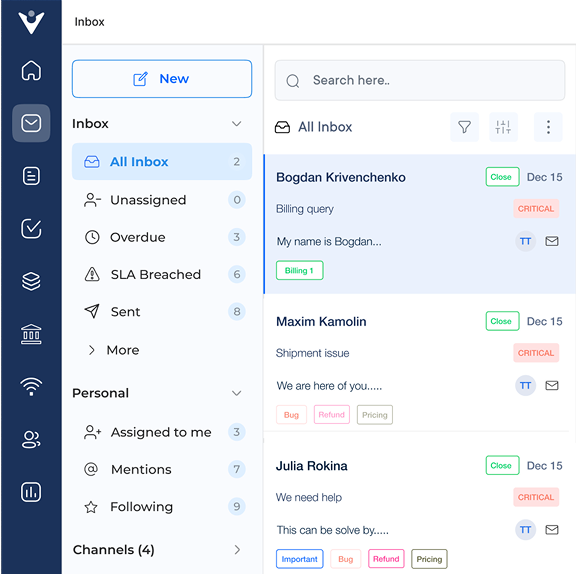1. Implement Omni Channel Help Desk
Implementing an omnichannel help desk maximizes help desk ROI by offering a seamless, personalized support experience across multiple channels. You can provide seamless support across various touchpoints by integrating multiple communication channels.
The agents will also benefit from a holistic view of customer interactions, leading to higher first-contact resolution rates and improved productivity. The approach allows for a consistent and personalized customer experience, regardless of their chosen channel. As agents can access and respond to tickets from a unified interface, it leads to higher customer satisfaction.
2. Leverage Analytics to Identify Common Support Issues
An analytics tool can collect user behavior and preferences data to identify common support issues. A powerful analytics system should swiftly offer valuable insights into trends regarding supported solutions.
Analyzing user data will help to discover patterns indicating specific pain points or recurring problems your customers face. Businesses can proactively develop targeted solutions or resources to assist customers in resolving issues independently.
3. Invest in Automation Tools
Automated tools play an important role in helping reduce the time it takes admins and agents to process requests while improving the accuracy of results. The average saving for companies using automation tools is $46,000. Automation tools are invaluable for streamlining support operations and improving efficiency.
A ticket auto-routing feature based on priority levels allows incoming queries to be automatically assigned to the most appropriate agent, reducing response times and ensuring prompt resolutions. Automation can be applied to repetitive tasks such as generating template responses or initiating follow-up actions, freeing agent’s time for more high-value interactions.
4. Implementing Self-Service Solutions
Introducing self-service solutions empowers customers to find answers to their questions independently. It also allows customers to solve their problems if they prefer speaking directly to an agent through live chat or phone support channels.

















